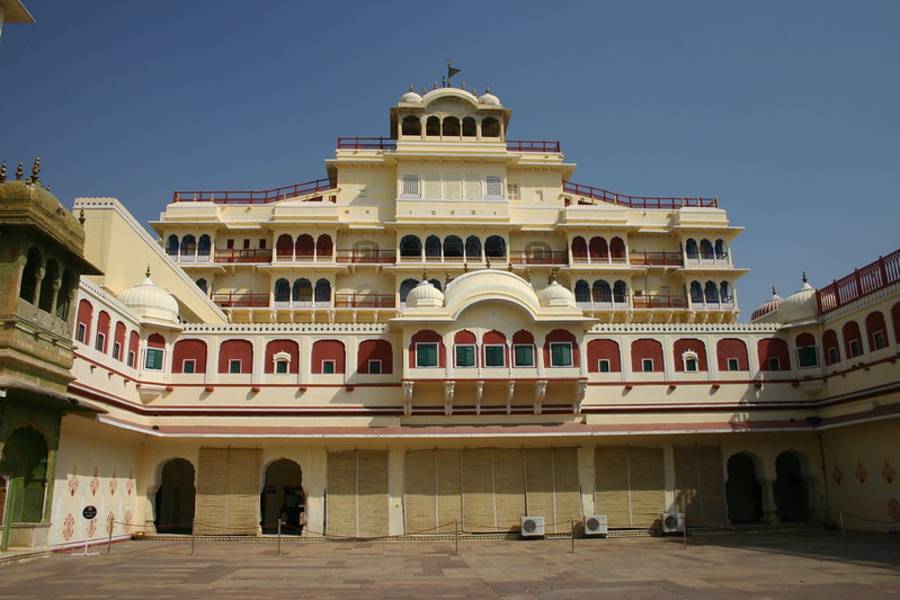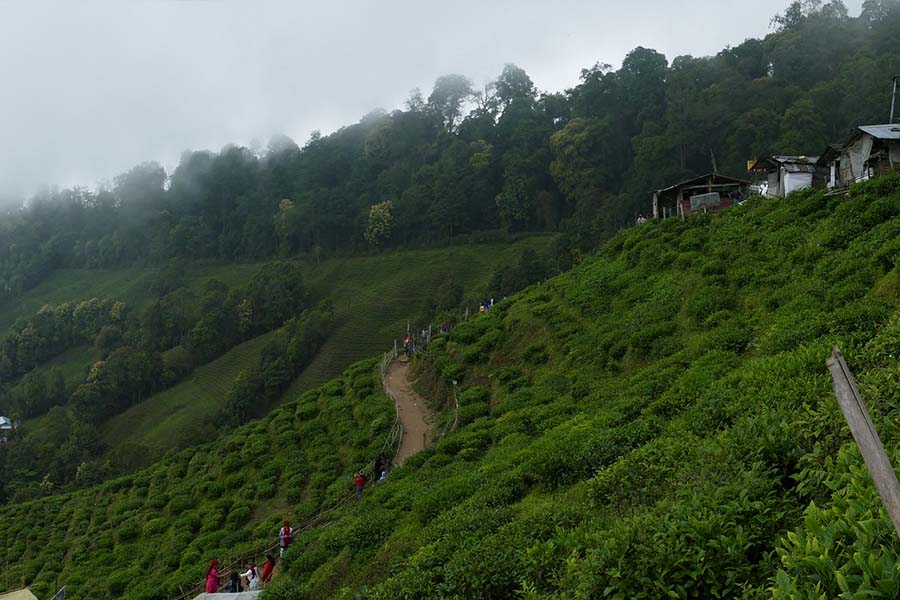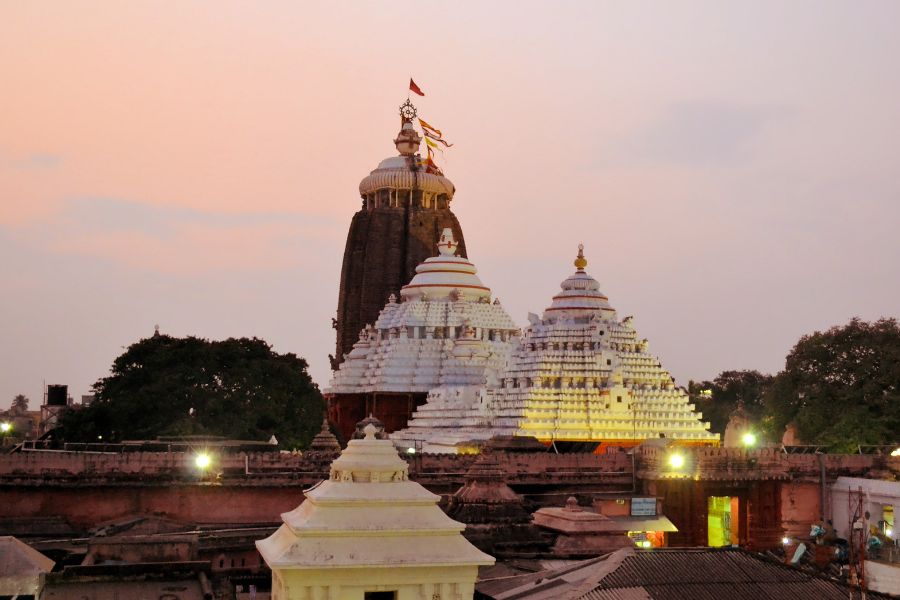City Palace in Jaipur
The City Palace is a palace complex located in the heart of Jaipur, the capital city of the Indian state of Rajasthan. The palace was built by Maharaja Sawai Jai Singh II of the Kachwaha Rajput dynasty in the early 18th century. It is a fusion of Rajasthani and Mughal architectural styles and is considered one of the most iconic landmarks in Jaipur.
The City Palace complex consists of several buildings, courtyards, gardens, and museums. The palace houses the Chandra Mahal and Mubarak Mahal, which are now converted into museums that showcase the history and culture of the royal family. The Chandra Mahal is a seven-storeyed building that contains various chambers, including the Sukh Niwas, the Shobha Niwas, and the Pitam Niwas.
The palace complex also includes the Diwan-i-Aam or the Hall of Public Audience, where the Maharaja used to address his subjects, and the Diwan-i-Khas or the Hall of Private Audience, where the Maharaja used to meet with important dignitaries. There is also a Pritam Niwas Chowk, which is a courtyard with four gates, each representing a different season or Hindu god.
The City Palace is a popular tourist attraction and is visited by thousands of tourists every year. The palace complex also hosts various cultural events and exhibitions, including the Jaipur Literary Festival, which is held annually.
History
The City Palace in Jaipur was built by Maharaja Sawai Jai Singh II of the Kachwaha Rajput dynasty in the early 18th century. The construction of the palace began in 1729 and continued over several generations, with each successive ruler adding new structures and features to the complex.
The architecture of the City Palace is a fusion of Rajasthani and Mughal styles, reflecting the cultural and artistic influences of the time. The palace complex includes several buildings, courtyards, gardens, and museums, each with its own unique features and history.
The City Palace served as the seat of the Maharaja of Jaipur, who was the ruler of the Kachwaha Rajput dynasty. The palace was also the center of the royal administration, with various offices and administrative departments housed within the complex.
The palace complex also played an important role in the social and cultural life of the royal family. It was the site of numerous ceremonies, including weddings, coronations, and religious festivals. The palace was also home to a vast collection of art, manuscripts, and other cultural artifacts, many of which are now on display in the palace museums.
Today, the City Palace is a popular tourist attraction and a symbol of the rich history and culture of Jaipur and the Kachwaha Rajput dynasty. The palace complex continues to be an important cultural and social center in the city, hosting various events and exhibitions throughout the year.
How will you gain access?
The Sanganer Airport (Jaipur) is 11 km from the City center. There are direct flights to places like Delhi, Mumbai, Udaipur, Jodhpur, and Aurangabad. By rail network, the city of Jaipur is linked with Bikaner, Jodhpur, Udaipur, Ahmedabad, Secunderabad, Agra, Lucknow, Mumbai, Chennai, and Kolkata. The Delhi-Jaipur National Highway is privileged to be one of the finest roads in the country. The Rajasthan Roadways runs regular AC and deluxe coaches from Delhi.
What are the timings and the entry charges?
The City Palace remains open for visitors from 09-30 to 17-00 hours. For Indians, the entry charge is Rs 35 per head. Foreign nationals have to pay Rs 150 each.
What goes behind the architecture?
The giant complex of the City Palace consists of royal residences, courtyards, gardens, and other palatial buildings. Most of the parts of the palace were designed by a Britisher Sir Swinton Jacob. The massive structure symbolizes a wonderful synthesis of the Rajasthani, Mughal, and British architectural style. The palace can be entered from the gateway called Atish Pol which leads to the first courtyard, the Mubarak Mahal. Built in the 20th century by Maharaja Madho Singh II, the Mubarak Mahal is today more of a museum exhibiting ancient royal textiles. Close to the Mahal lies the ‘SilehKhana’, presenting a large collection of 15th-century weapons, carpets, and other antiques. Shri Govind Temple, Diwan-e-Khaas, Diwan-e-Aam, Sukh Niwas, Shobha Niwas, and ChaviNiwas are the other popular attraction of the palace.
What are the nearby attractions?
Govindji Temple
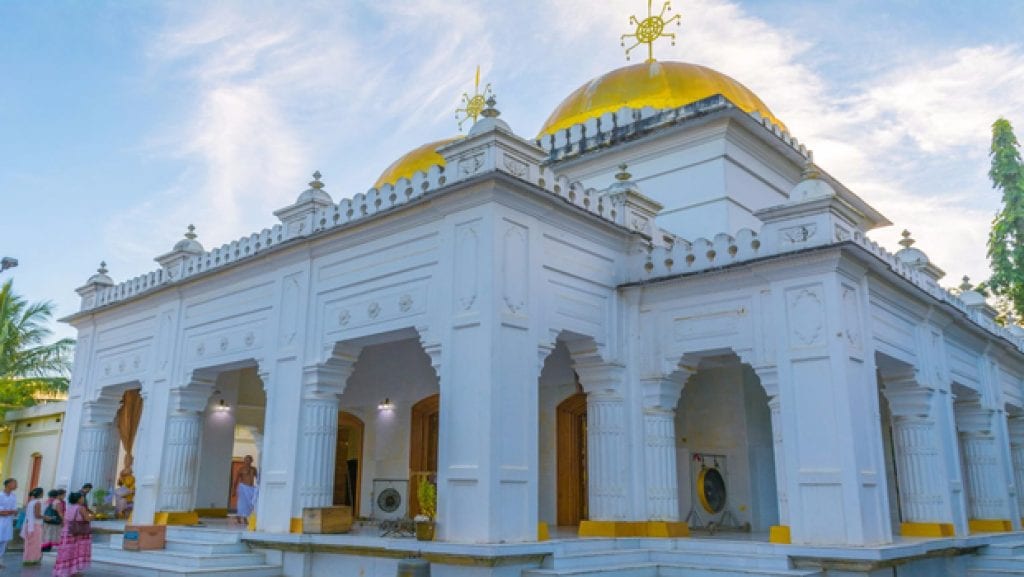
The Govindji Temple is located to the north of the City Palace. The idol in the temple was brought by Maharaja Sawai Jai Singh from Mathura to save it from the Mughal emperor Aurangzeb.
Jantar Mantar
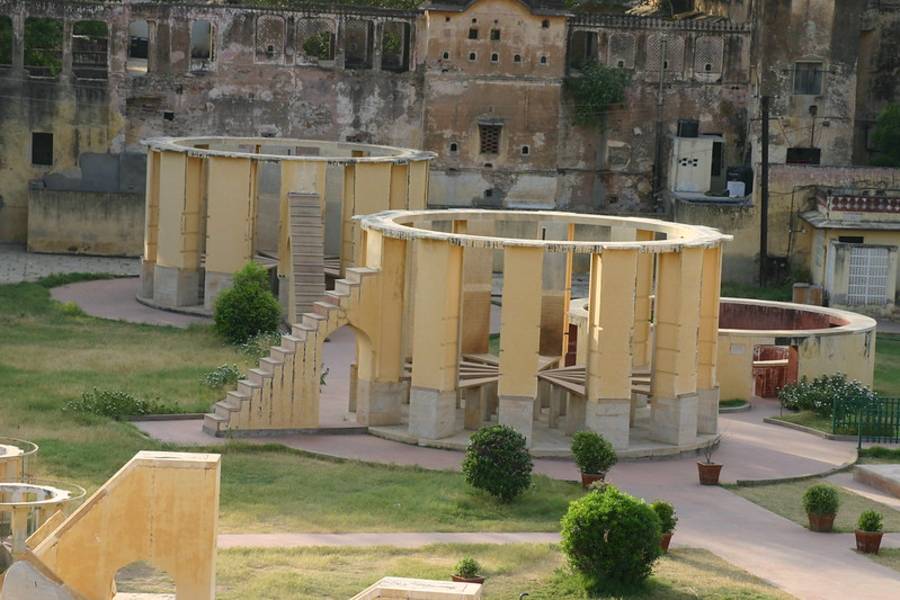
The Jantar Mantar or the observatory was erected by Sawai Jai Singh in the year 1728. The futuristic scientific instruments or Yantras were built to measure the local time, the sun’s declination, azimuth and altitude, the declination of fixed stars and planets and to determine eclipses.
Hawa Mahal
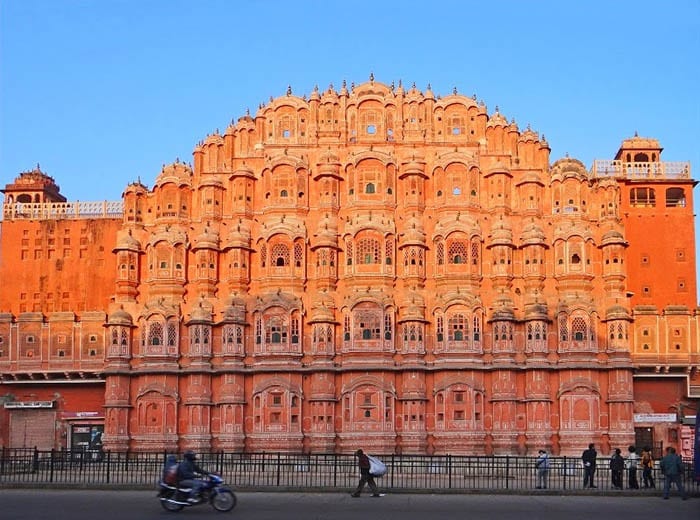
The Hawa Mahal or the Palace of Winds stands abutting the City Palace. It was built by Maharaja Sawai Pratap Singh in the year 1799. The palace was erected with a view to enabling the royal ladies to watch the everyday life and the processions of the city.
Gaitor
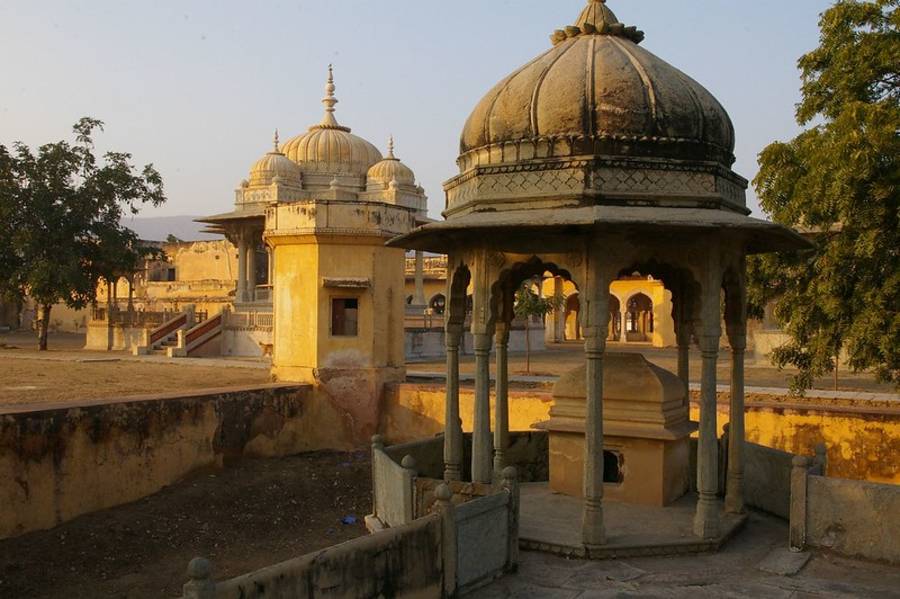
Gaitor is located at a distance of 8 km from the city of Jaipur. Here, there are a number of cenotaphs of the members of the royal family. The cenotaphs stand in a garden at the base of the Nahargarh Hills. The white-marble cenotaph of Sawai Jai Singh II is one of the most spectacular and intricately carved.
Things to do
There are several things to do and see at the City Palace in Jaipur, some of which include:
- Visit the museums: The City Palace complex houses two museums – the Maharaja Sawai Man Singh II Museum and the Textile Museum. Both museums provide a glimpse into the rich history and culture of the royal family of Jaipur.
- Explore the courtyards and gardens: The palace complex has several courtyards and gardens, including the Mubarak Mahal, the Pritam Niwas Chowk, and the Sileh Khana. These areas are perfect for taking a leisurely stroll and admiring the beautiful architecture and greenery.
- Attend cultural events and exhibitions: The City Palace hosts several cultural events and exhibitions throughout the year, including the Jaipur Literature Festival, which is one of the largest literary festivals in Asia.
- Watch the Light and Sound Show: The palace complex also offers a Light and Sound Show in the evening, which tells the history of the City Palace and the Kachwaha Rajput dynasty through a multimedia presentation.
- Take a guided tour: To fully appreciate the history and architecture of the City Palace, it is recommended to take a guided tour. There are several tour companies that offer guided tours of the palace complex, providing visitors with a deeper understanding of the culture and history of Jaipur.
FAQ
Here are some frequently asked questions (FAQ) about the City Palace in Jaipur:
What are the City Palace’s opening hours?
The City Palace is open every day from 9:30 am to 5:00 pm.
How much is the admission fee to the City Palace?
The admission fee for the City Palace is INR 200 for Indian nationals and INR 700 for foreign nationals. There are separate fees for photography and videography.
How long does it take to tour the City Palace?
It typically takes 2-3 hours to tour the City Palace, depending on how much time you spend in each section and whether you take a guided tour.
Is the City Palace accessible for people with disabilities?
The City Palace is partially accessible for people with disabilities. However, some areas may not be easily accessible, especially the upper floors of the Chandra Mahal.
Can I take photographs inside the City Palace?
Yes, photography is allowed inside the City Palace. However, there is a separate fee for still photography and videography, and the use of tripods and flash is not allowed.
Is there a dress code to visit the City Palace?
There is no official dress code to visit the City Palace, but it is recommended to dress modestly and respectfully, especially when visiting the temples and other religious areas within the palace complex.
Are there any restaurants or cafes inside the City Palace?
There are several restaurants and cafes within the City Palace complex that serve traditional Rajasthani and Indian cuisine, as well as snacks and drinks.

